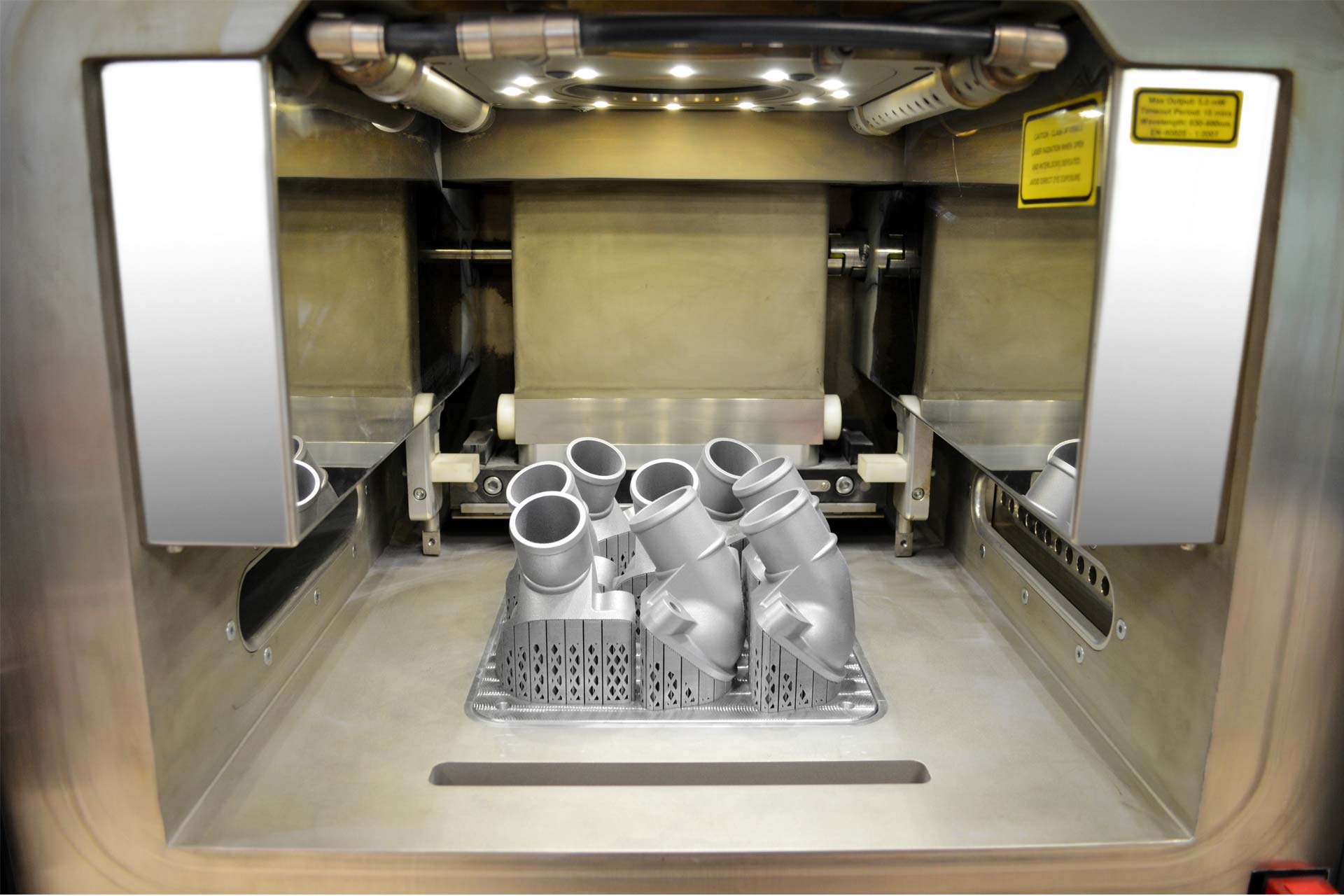Mercedes-Benz’s truck division has started 3D printing of metal parts, with the first one being a thermostat cover made from aluminium, for truck and Unimog models from older model series whose production ceased around 15 years ago.
Production of metal parts directly from digital data records saves expensive special tools, storage and transport costs, said the company. Automotive 3D printing at the truck division began almost a year ago for after-sales and replacement parts. Since then, the Customer Services & Parts division has worked with the researchers and developers at Daimler AG to constantly improve and expand the use of the latest 3D printing processes for plastic parts.
“With the introduction of 3D metal printing technology, Mercedes-Benz Trucks is reasserting its pioneering role among global commercial vehicle manufacturers,” says Andreas Deuschle, Head of Marketing & Operations in Customer Services & Parts at Mercedes-Benz Trucks. “We ensure the same functionality, reliability, durability and cost-effectiveness with 3D metal parts as we do with conventionally produced parts.”
The company explains that the metal parts from the 3D printer excel with their very high strength and thermal resistance, and the process is therefore particularly suitable for the production of mechanically and thermally stressed components required in small numbers. Metallic components can be produced “at the touch of a button” with any geometry and in any numbers. 3D replacement parts production began with rarely ordered aluminium parts. These excel with almost 100 percent density and greater purity than conventional die-cast aluminium parts. Apart from their high strength and hardness, as well as high dynamic resistance, their production requires no cost-intensive development work or procurement of special tools. Conceivable areas of use are peripheral engine parts made of metal, in-engine parts and also parts in cooling systems, transmissions, axles or chassis. Especially when they have complex structures, 3D-printed metal parts in small numbers can be produced cost-effectively as infrequently requested replacement parts, special parts and for small and classic model series.
“The availability of spare parts during a workshop visit is essential for our customers, no matter how old the truck is, or where it is located. The particular added value of 3D printing technology is that it considerably increases speed and flexibility, especially when producing spare and special parts. This gives us completely new possibilities for offering our customers spare parts rapidly and at attractive prices, even long after series production has ceased,” Deuschle concludes.

Leave a Reply
Note: Comments that are unrelated to the post above get automatically filtered into the trash bin.






































